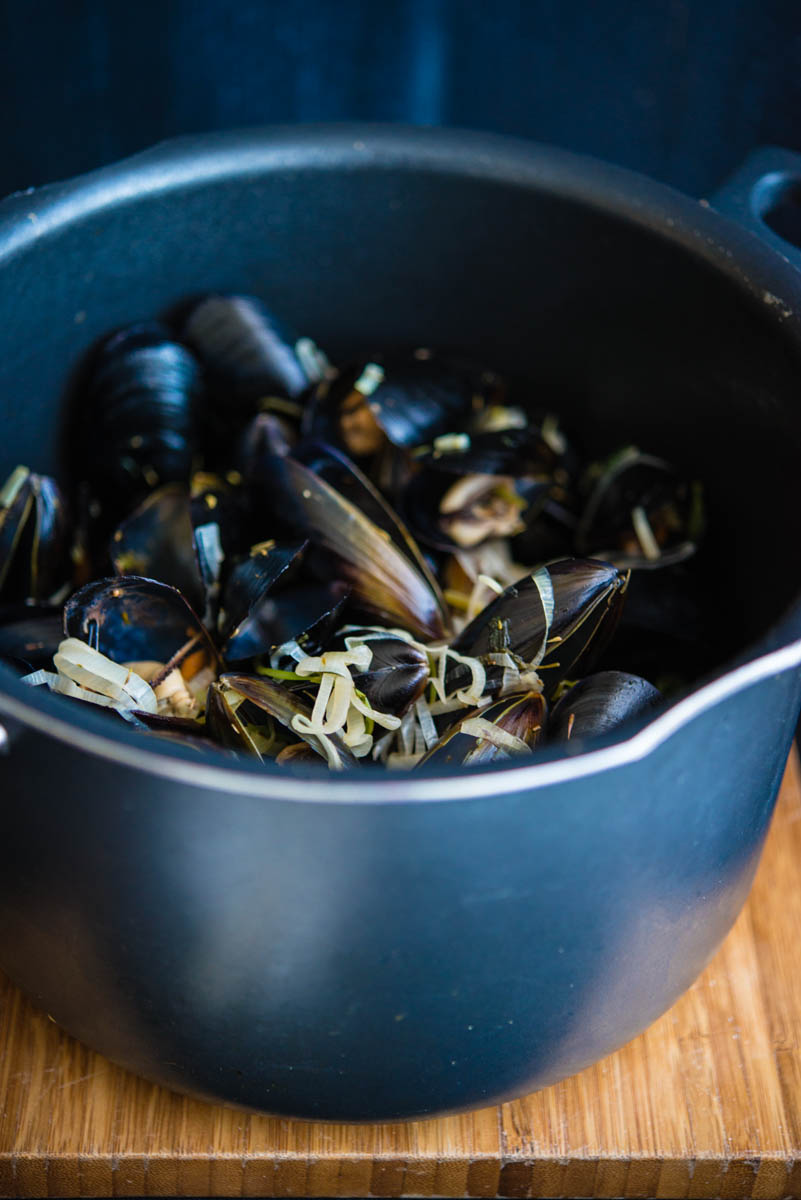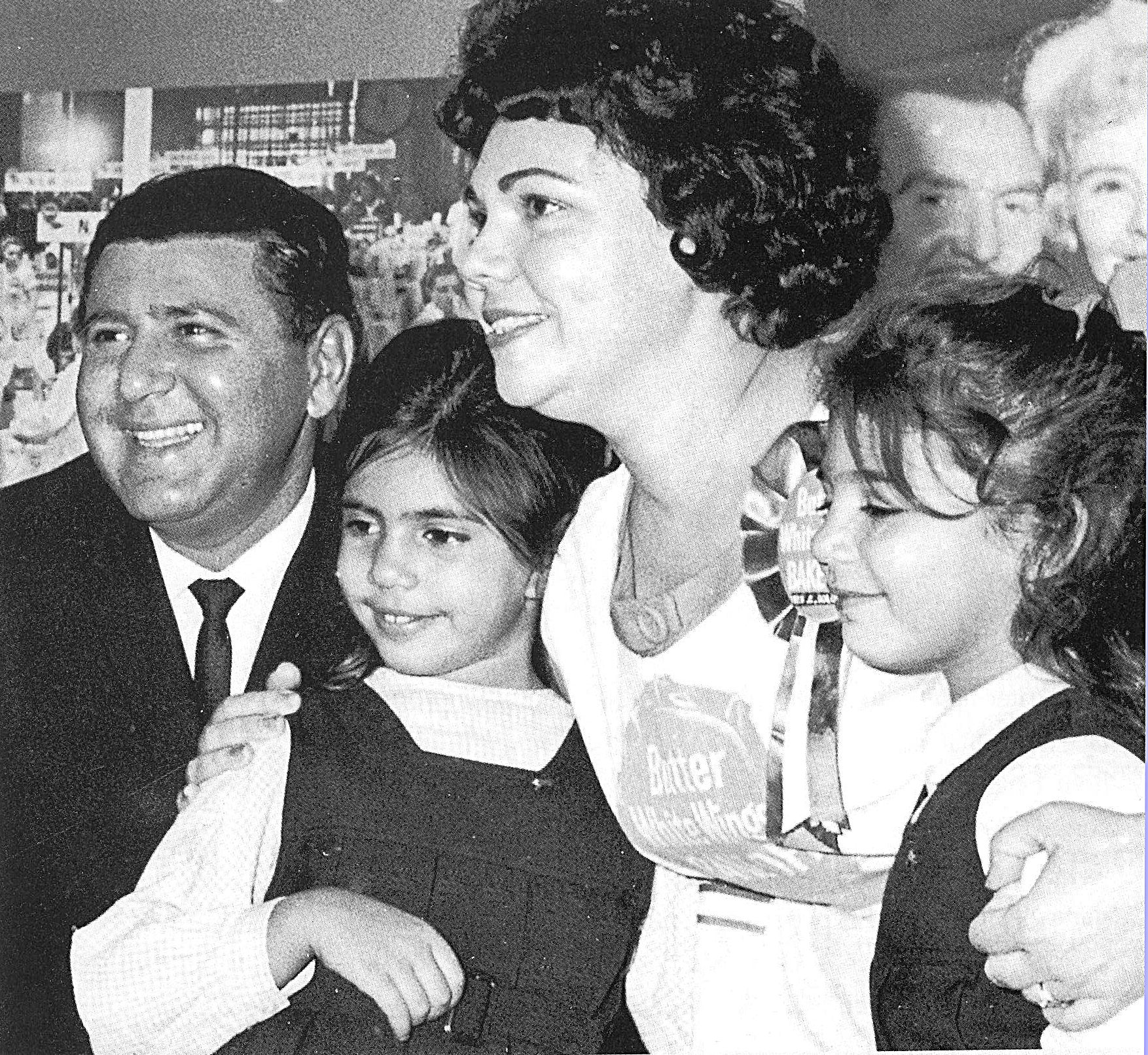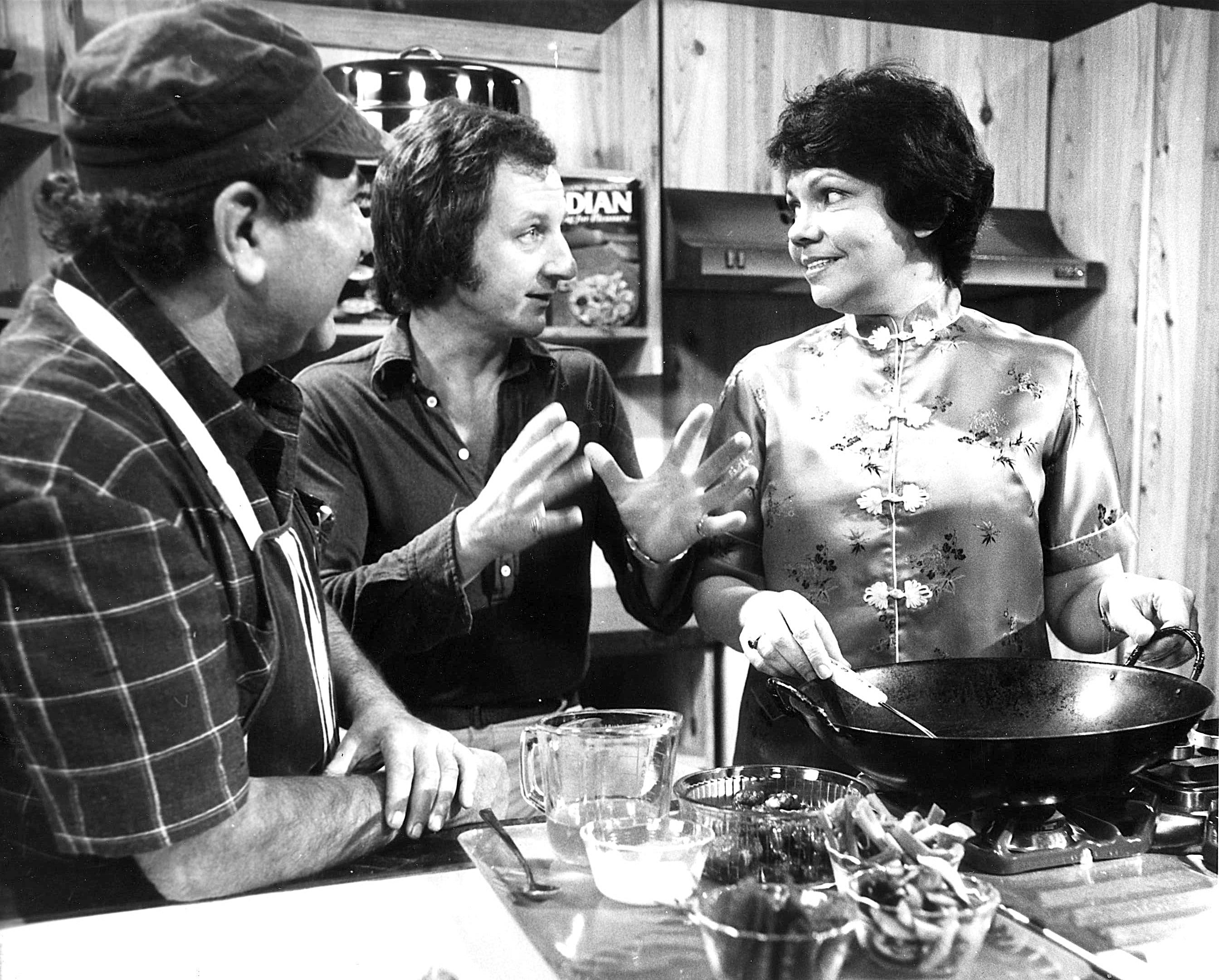Regular readers will know how much I love the Barossa Valley, Australia’s most famous wine region. I’ve written before about how much I love visiting and how I day-dream about moving my family there. Situated about an hour from South Australia’s capital of Adelaide, it’s a picturesque region with world-class wineries, numerous fine dining restaurants, galleries and an excellent farmer’s market.
So I was thrilled when I found out that as part of the recent Tasting Australia media famil, I would be visiting the Barossa Valley for two days with a group of international food journalists, authors, chefs and bloggers.
Here are some of my trip highlights.

This is moments just before the Maggie Beer knife incident.
Yes, I cut my finger while chopping pears next to Maggie Beer. I’m not proud to admit it.
Ridiculous, right? Here I was cooking with one of the legends of Australian cooking in front of a group of distinguished foodies. It should have been one of my finest hours but instead I’m so intimidated I actually manage to cut myself while chopping the pears. Complete fail. Massive shame attack.
Luckily, a glass of Maggie’s Sparkling Ruby Cabernet helped me to recover my composure. It’s a delightful non-alcoholic wine made with early harvest Cabernet grapes. Isn’t it just the most gorgeous colour?
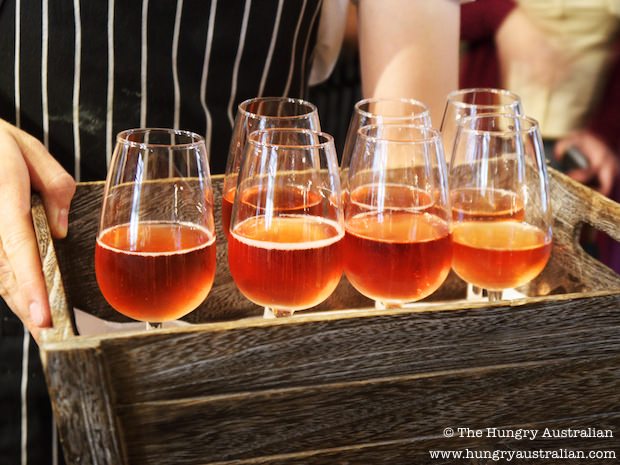
We’re at Maggie Beers Farm House today for a special audience with Maggie. We cook lunch with her in the very kitchen that her hit TV series, The Cook and The Chef was filmed. I feel privileged.
Maggie is a gracious and exuberant host, a consummate multi-tasker and a highly focused and energetic woman. As she shares her plans for her hugely successful signature label gourmet food line, I’m reminded that there is no secret trick to success.
My mate Thang (@ThangNgo) from popular Sydney blog, Noodlies, recently tweeted:
“My Viet corner shop man opens 6am everyday. He now owns a huge mansion. Success is just consistent hard work.”
To which I (@HungryAustralia) replied,
“Yes, there’s no secret trick to long-term, sustained success. I love the saying, ‘the harder I work the luckier I become’. True!”
Maggie is a success because she works bloody hard. Yes, she’s talented, knowledgeable, passionate and energetic. But it’s her strong work ethic and perfectionist streak that ensures that she is constantly striving to improve and grow. She’s an absolute inspiration.

Lunch today is a lovely roasted pheasant salad – Maggie started her career with the legendary Pheasant Farm Restaurant after all – featuring radicchio and rocket and dressed with olive oil and Maggie’s signature verjuice. It’s the type of food – heavy on protein and vegetables – I can eat happily for lunch any day of the week.

Dessert is the pear pie that I have had a hand, sorry, finger, in making. *Groan*. Served with Maggie Beer’s own vanilla bean ice-cream, it’s comfort food with a capital C.F. I make a lot of crumbles and pies for my family in winter – it’s my way of saying ‘nyah nyah nyah’ to the chilly nights.
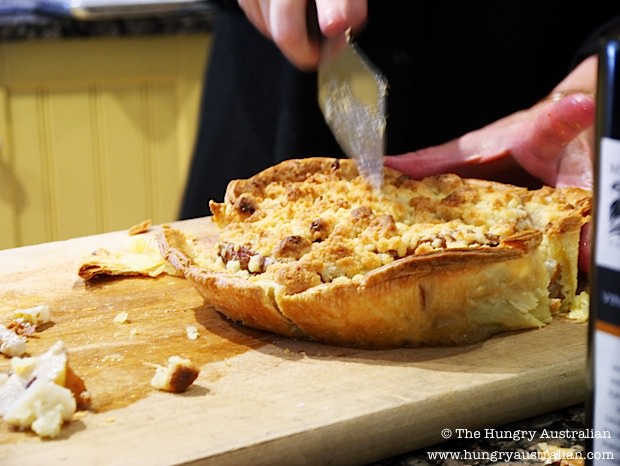
It’s been a memorable visit. Thank you Maggie for your warmth and hospitality. I shall return and when I do I’ll come in disguise so you don’t recognise me as the twit that cut their finger in your kitchen.
Maggie Beers’ Farm House
End Of Pheasant Farm Rd, Nuriootpa SA 5355
Tel: 61 (0)8 8562 4477
Open everyday, 10.30am – 5pm, except New Year’s Day, Good Friday, Christmas and Boxing Day.
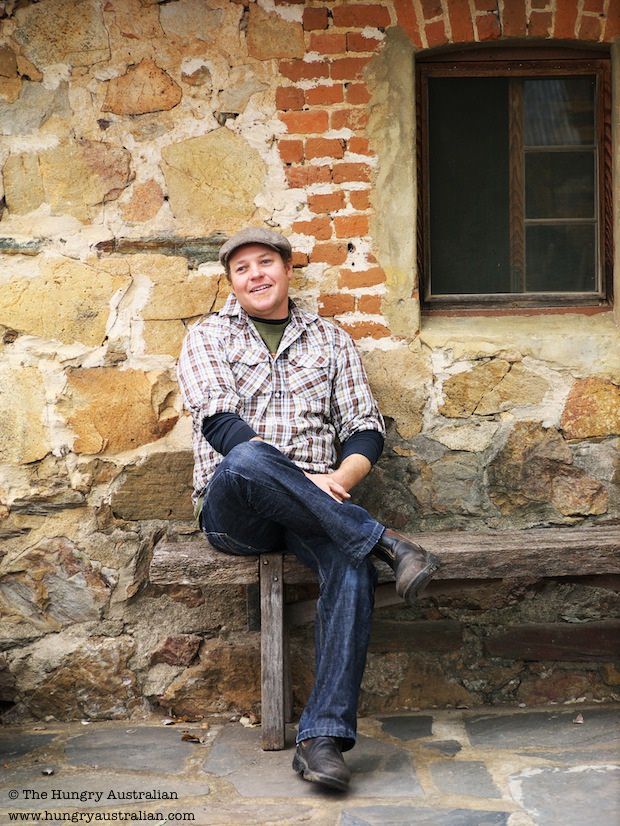
This gentleman from Rockford looks completely relaxed, doesn’t he? He could be enjoying a a balmy Spring day. He must have the constitution of an ox because it is actually absolutely freezing!
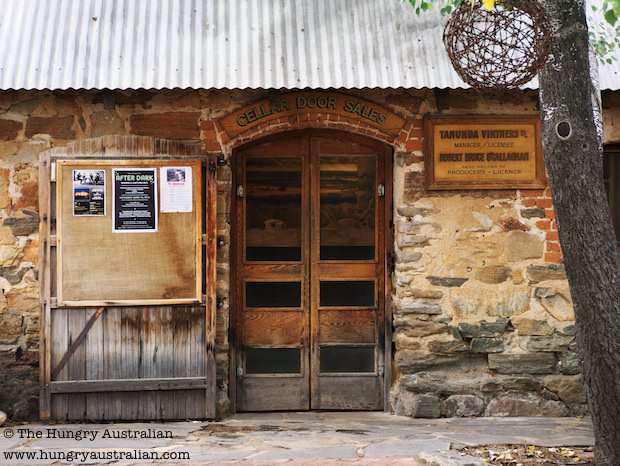
We arrive at Rockford on a chilly and overcast Autumn morning. Storm clouds cover the sky and the air is damp with moisture.
After a brief explanation of the winery’s history and Rockford’s wine-making process, breakfast is served outside in their lovely courtyard. Today Rockford’s chefs Sandor and Lauren Palamai have prepared a menu featuring fresh produce grown at Krondorf Farm.

We’re all shivering so we leap upon the hot food with enthusiasm. First up, this lovely porridge with fruit and nuts.
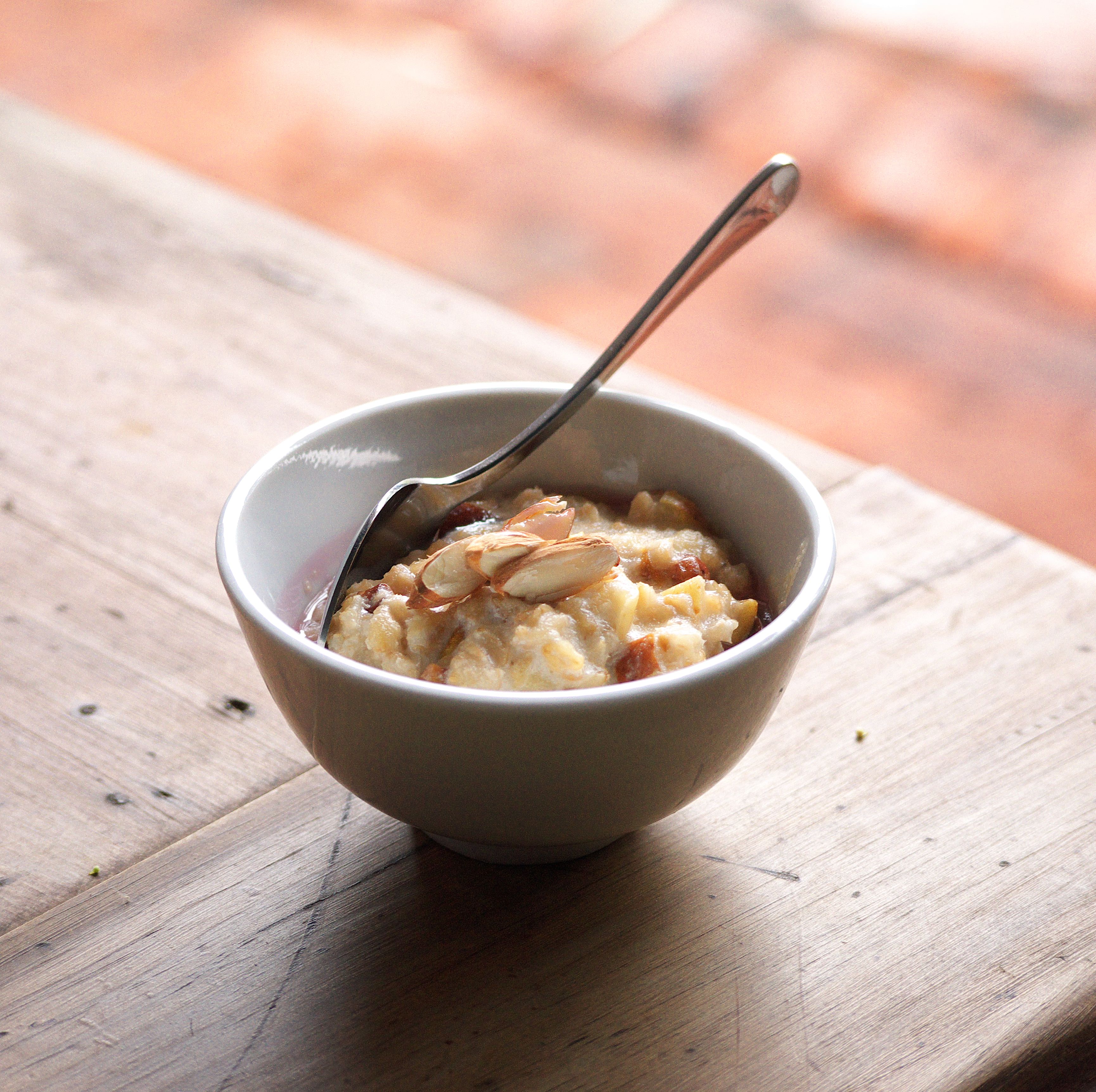
Next we’re served mini leek and chicken pies. The pastry is golden, flaky and light while the filling is gorgeously moist and succulent without being gluey. I manage two before they’re all snaffled up.
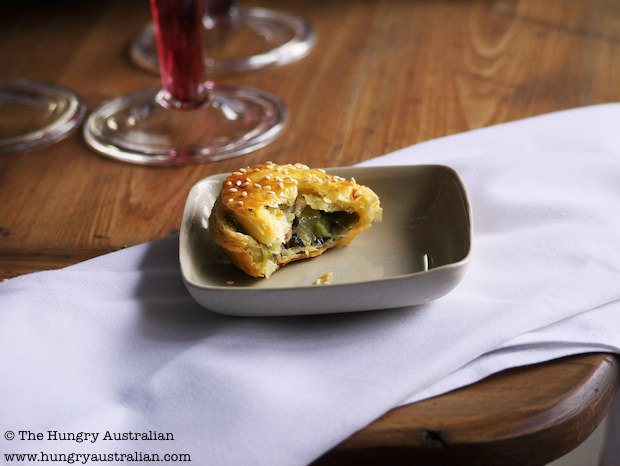
The next dish, scrambled eggs with salmon, is gorgeous. I adore the combination of salmon and eggs – it’s one of my favourite breakfasts – and here the eggs are barely cooked, just as they should be.
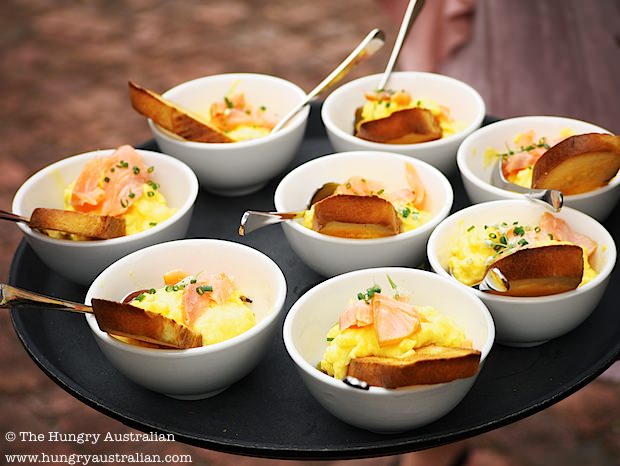
To finish, we enjoy some lovely friands dusted with icing sugar. They’re delightfully chewy, but not overly sweet. I’m loving them but I’d be loving them even more if they came with a cup of hot steaming tea.
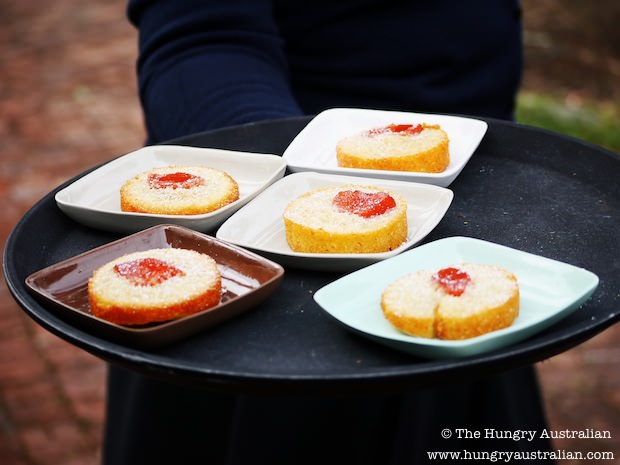
I complain about the cold to Helen who immediately says, “I know what will warm you up. Let’s do a jumping shot.”

So we do. Helen pulls off her signature karate kick but I am wearing a skirt so settle for an exuberant ‘What a Feeling’ type jump.
By the way, she’s right. After the jump, and the hysterical giggling, I’m a lot warmer.
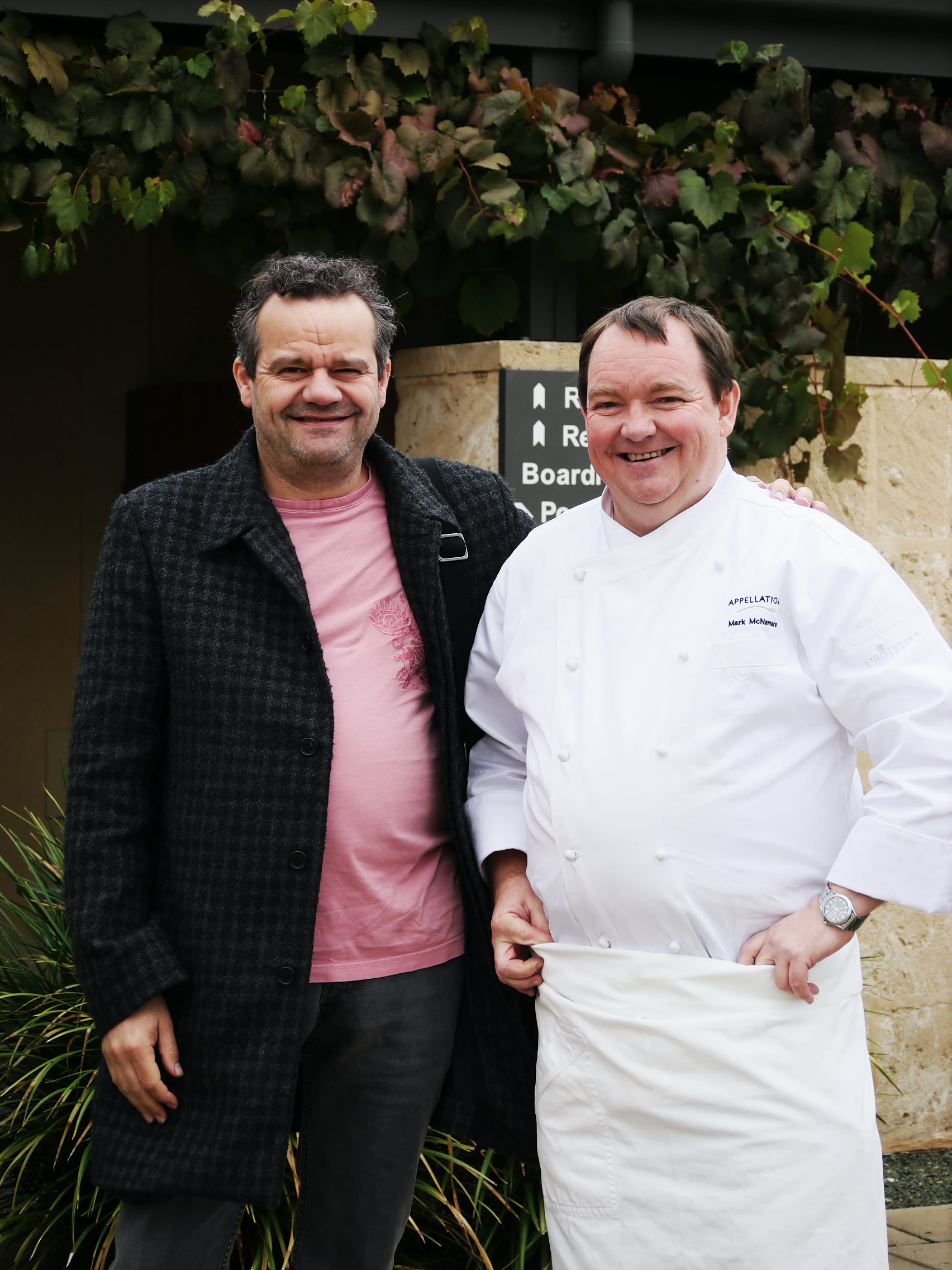
We’re running late and as our bus pulls up to Appellation at The Louise we see executive chef Mark McNamara and what seems like the whole kitchen and wait staff standing outside, waiting patiently in the chilly wind. They must be freezing but they greet us with smiles and firm handshakes – it’s an impressive first impression, and one that only grows steadily during our time at Appellation.
Mark McNamara and Mark Hix (above) greet each other warmly. They’re both two hard-working chefs at the top of their game.
Before we separate into groups for our masterclasses we take a group photo.
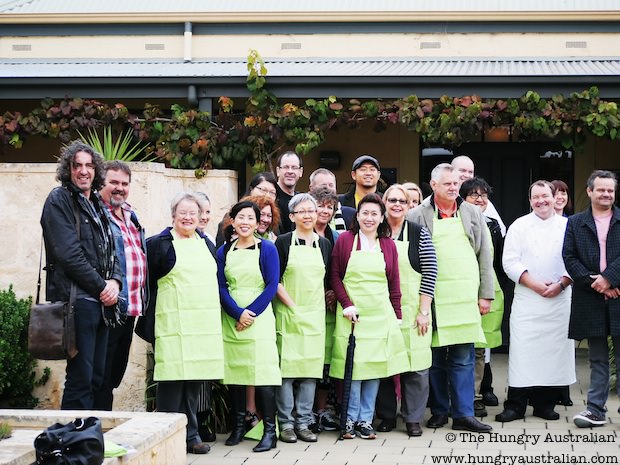
From left to right: Richard Fox, Martin Bosley, Elaine Reeves (The Mercury), moi, Rebecca Variadel (Inside Cuisine), Helen Yee (Grab Your Fork), Antony Suvalko (Foodie), Angeline Thien (Singapore Women’s Weekly), Julie Buiso, Grant Allen (New Zealand Herald), Lynnette Lim (Wine & Dine Experience), Billy Law (A Table for Two), Kaylene Murray from Style Living, Christine Salins, Tom Murray (Style Living), Ryan Edwards (Appellation) Bingbin (China Daily), Mark McNamara (Appellation), Ruby Stobart (Appellation) and Mark Hix.
Then we split into groups – some of us make pig head terrine in the Appellation kitchens, some of us explore the kitchen garden and some of us have a bread making masterclass with Mark and pastry chef Anna Motteram using a nearby kitchen. I’m in the last group. I’m glad to be in the warmth of a kitchen but even more glad to have a chance to get up close and personal with Mark and Anna.
Mark explains that Appellation bake three differnet kinds of bread every day — a plain loaf, a fennel and sultana and a rye bread — with South Australian Lauke flour. Using a natural ferment process that captures the indigenous yeast in the air, they created a speciality sour dough starter with high levels of natural bacteria and yeast. It’s extremely sensitive to humidity so they feed it once a day in summer and three times a day in winter.
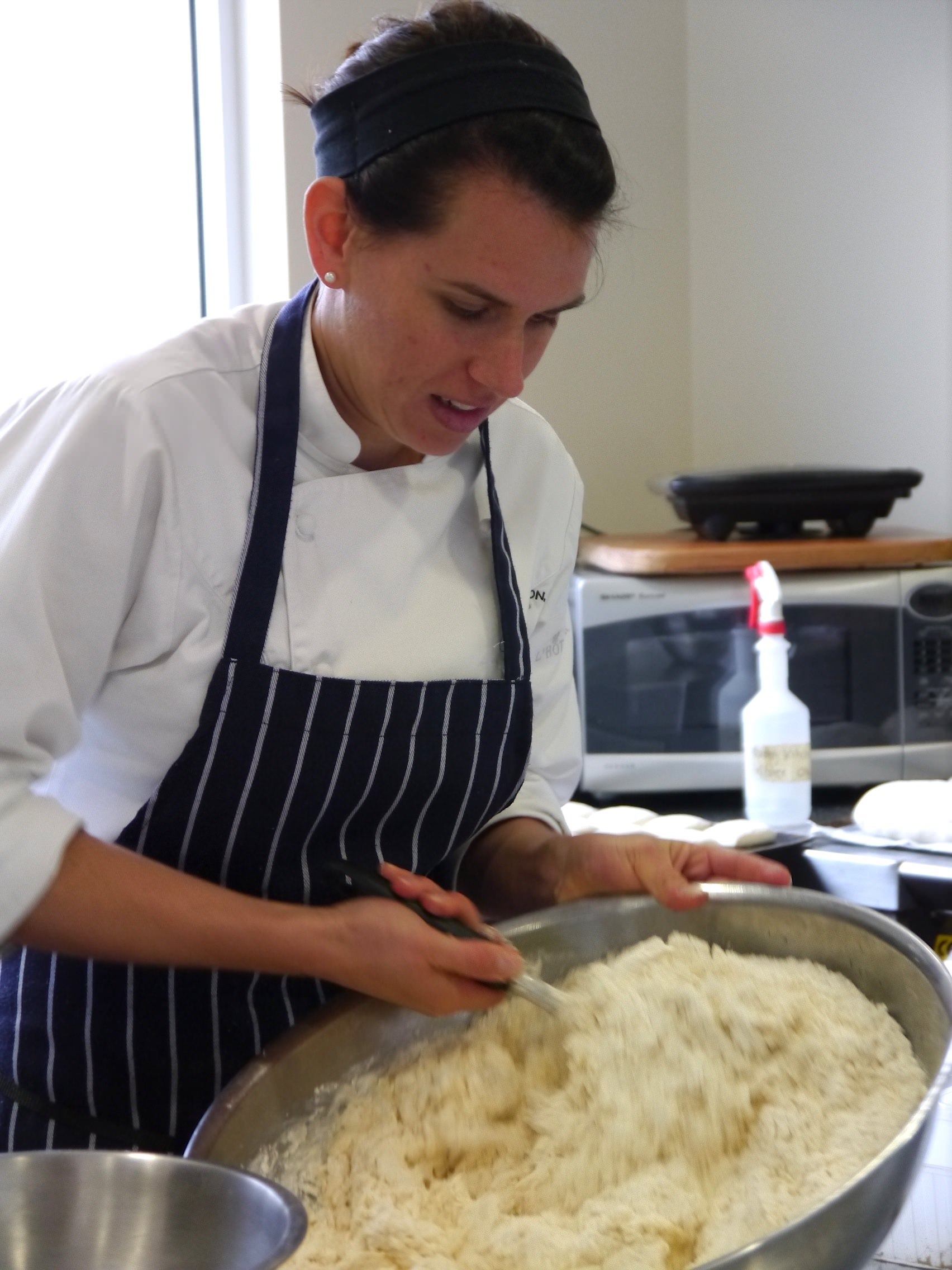
After Mark and Anna demonstrate the correct kneading technique we are all encouraged to have a go.
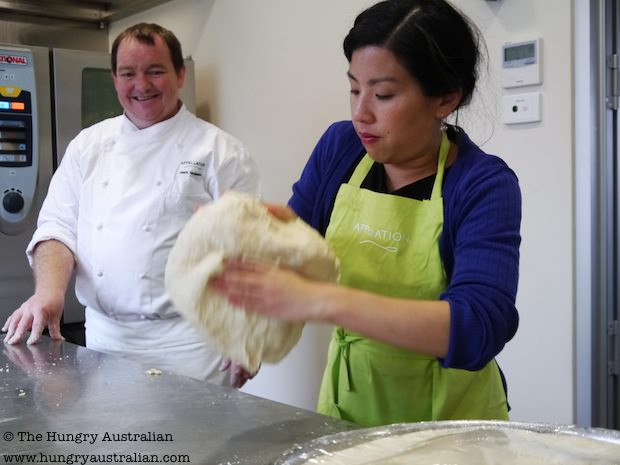
It’s a lot harder than I imagined – you need to put some serious effort into the kneading! Now I understand why bakers have serious forearms.
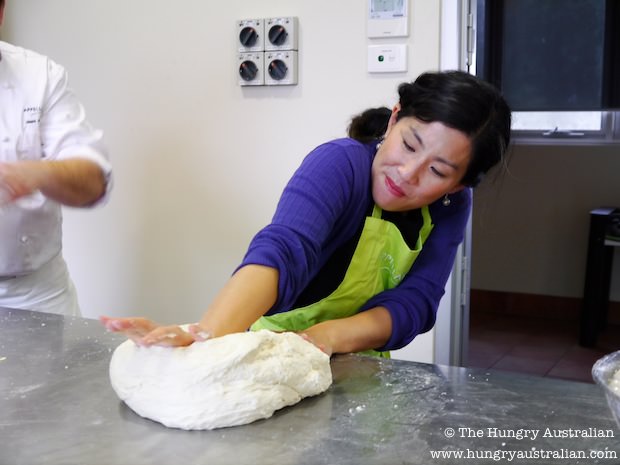
Ta da! And here’s the finished bread, hot out of the oven. It smells so good I have to restrain myself from diving straight in.
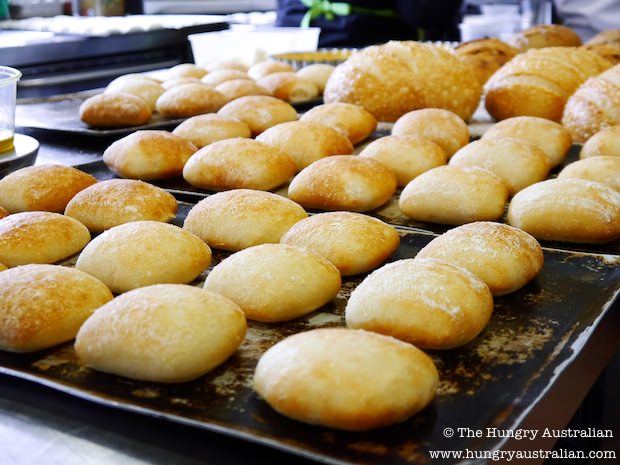
Afterwards, Mark shows us how to make a Lime Pie, using a Thomas Keller (French Laundry) recipe as a starting point. This is a gorgeous pie but one that requires a lot of work over a hot stove – the sabayon needs a good ten minutes of solid whisking. Mark manages it with a smile.


As we cook, I ask Mark about his plans as he’s just announced that he’s stepping down from Appellation in June.
“I’ve been cooking for 35 years,” he says. “I want to go to India and travel, have a break, get inspired again. I may even do some study or training.”
And afterwards?
“Well, there are opportunities of some consultancies, cookbooks and writing,” he says, with a smile.
Personally, I am sure that Mark will be besieged with offers and can’t wait to see what he does next.
Here’s the finished pie, served with slow-roasted quinces as part of our lunch afterwards. It’s wonderfully light and fragrant with lime.

Lunch is spectacularly good. Check out some of the beautiful bread sticks wrapped in prosciutto and our stunning main, Duck Two Ways with butternut, sunchokes and pomegranate.

Mark’s successor at Apellation is his Sous Chef, Ryan Edwards. Like all of the Appellation team, Ryan comes across as completely focused, respectful and professional. In fact, when reflecting upon our class and lunch at Appellation, the saying ‘well oiled machine’ springs to mind.
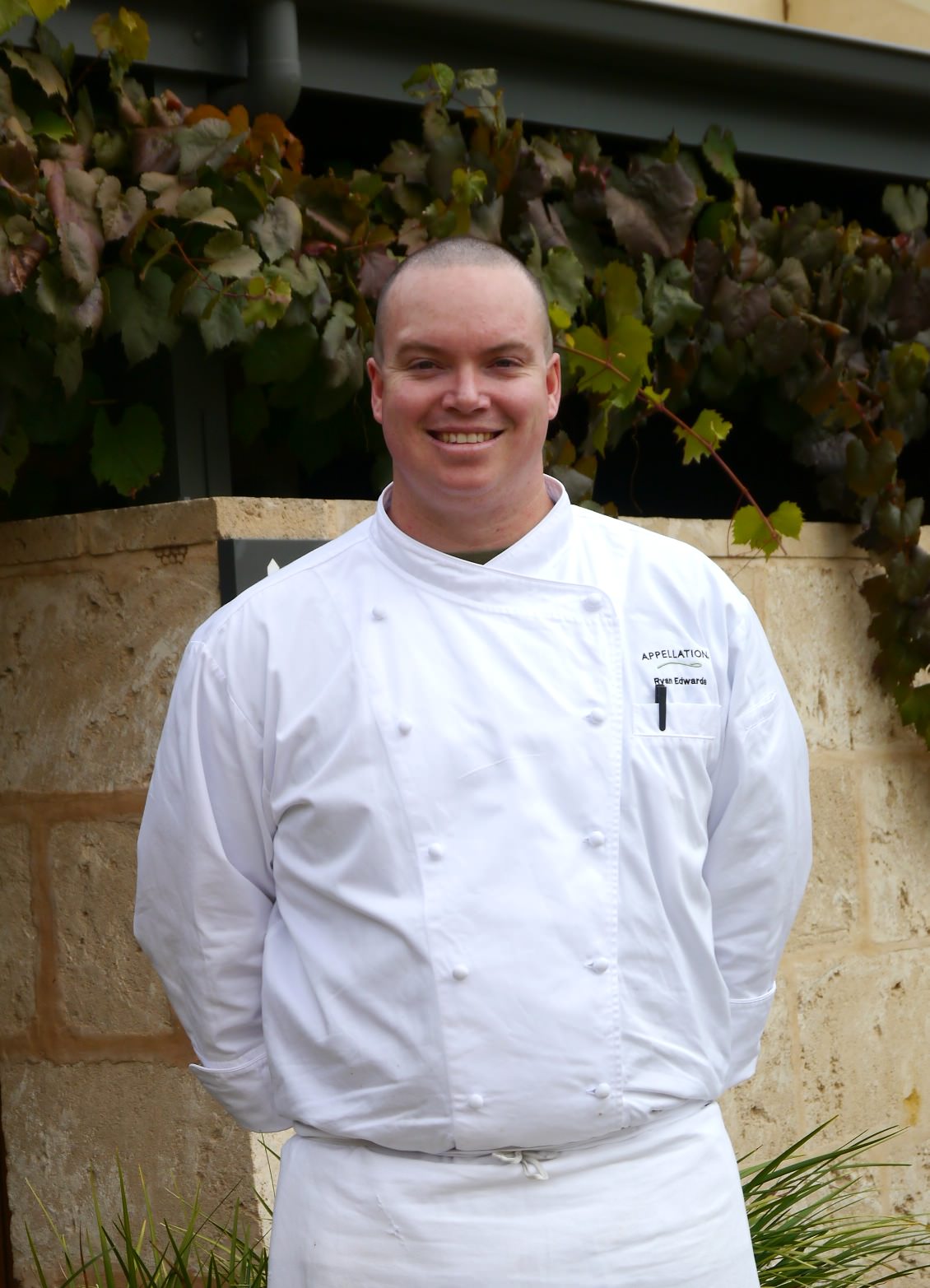
So I very much look forward to returning to Appellation when it reopens in July. Yes, Mark will be gone, but his legacy, and the excellent Appellation team, will continue to wow and delight.
Appellation at The Louise
Corner Seppeltsfield and Stonewall Roads
Marananga, Barossa Valley, South Australia
Tel: +61 8 8562 2722
Email: stay@thelouise.com.au
Christina Soong-Kroeger visited the Barossa Valley as a guest of Tasting Australia.
